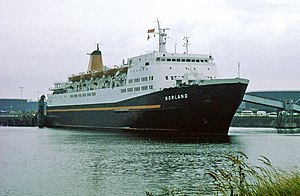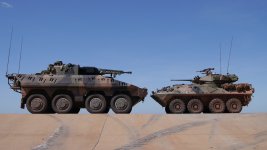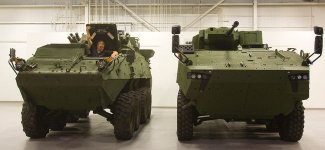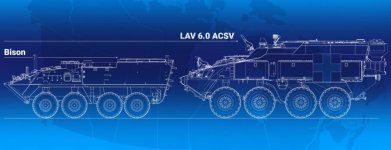You are using an out of date browser. It may not display this or other websites correctly.
You should upgrade or use an alternative browser.
You should upgrade or use an alternative browser.
Informing the Army’s Future Structure
- Thread starter dimsum
- Start date
- Reaction score
- 7,297
- Points
- 1,160
Shipping companies use flags of convenience to save costs (taxation, labour, regulatory compliance, etc.). I would imagine the companies would expect the government to pay the net differences upfront and ongoing, just for being available. Then again, we the people might determine that is an acceptable strategic cost.
Also, regarding the coastal ferries, I wonder what their range would be.
The Norland was a RoRo ferry that operated between Hull and Zeebrugge - roughly 350 km.
In 1982 she transported 2 Para from Plymouth to San Carlos Water in the Falklands - something like 15,000 km
MV Norland
From Wikipedia, the free encyclopedia
Jump to navigationJump to search
The Norland was a P&O roll-on/roll-off ferry operating between Kingston upon Hull in Yorkshire, UK, and Rotterdam Europoort, Netherlands, and then Zeebrugge, Belgium. The 27,000 tonne ferry was built in 1974 by AG Weser, Bremerhaven, for Dutch North Sea Ferries partners Noordzee Veerdiensten N.V. Sistership MV Norstar sailed under Dutch flag and Norland under British flag and with (mainly) British crew. The ship transferred to P&O North Sea Ferries in 1996.
General characteristics after 1987 stretch General characteristics History
Norland 1979 in RotterdamName:
- Norland (1974–2002)
- SNAV Sicilia (2002–2010)
Owner:
- North Sea Ferries (1974–1996)
- P&O North Sea Ferries (1996–2002)
- SNAV Aliscafo (2002–2010)
Operator:
- North Sea Ferries (1974–1996)
- P&O North Sea Ferries (1996–2002)
- SNAV (2002–2010)
Port of registry: Yard number: 972 Launched: 13 October 1973 In service: 1974 Out of service: 2010 Identification: IMO number: 7333822 Honours and
awards:Falkland Islands, 1982 Fate: Scrapped Class and type: RORO Tonnage: 12,988 GRT Length: 152.77 m (501.2 ft) Tonnage: 26,290 GT Length: 173.29 m (568.5 ft) Beam: 25.2 m (83 ft) Draft: 6.02 m (19.8 ft) Propulsion: Two SWD 16TM410 Speed: 19 knots (35 km/h)
Contents
Falklands Service[edit]
During the Falklands War, the Ministry of Defence requisitioned the Norland to be used as a troopship in the Task Force sent to retake the Falkland Islands from Argentina. Norland was among the ships to enter San Carlos Water during the amphibious landings of Commandos and Paratroopers, Captained by Donald Ellerby CBE. The ship survived attack from the Argentine Air Force, and at the end of the war repatriated the defeated Argentine troops back home, alongside the Canberra.[1] For this service Norland received the battle honour "Falkland Islands 1982,"[2] which for many years was displayed in one of the passenger lounges, with a painting of the ship in San Carlos Water.
FJAG
Army.ca Legend
- Reaction score
- 11,311
- Points
- 1,160
One other point that I took from the article was that the US brigade moved with a short logistical tail and kept 72 hours supplies on its own wheels. It exploited the difference between the needs of the Wheeled Brigade and the demands of the logistically encumbered heavy brigades.
One thing that intrigues me is my sense that the Canadian concept doesn't fully exploit the fact that each section vehicle is essentially a deuce and a half. We seem to see a need to attach a tail based on the armoured regiment to the wheeled unit thereby, it seems to me, losing some of the benefits that the LAV concept offers.
Just FYI, the link below is to the new US Congressional Budget Office Primer on the US Military's Force Structure for 2021. It has an excellent breakdown of the ORBAT of each of a US ABCT, SBCT and IBCT starting at page 22.
With respect to the logistic tail that attaches note in particular the tails for the SBCT (the closest thing to our LAV based CMBGs). You'll see at pg 30 that each Rifle company and Battalion HQ have fairly decent support tails included BUT note in particular at page 31 that each battalion is also supported by a Forward Support Company that is part and parcel to the Brigade Support Battalion and that, in addition to an FSC for each battalion in the brigade, the BSB also has a very robust Maintenance Company and Distribution Company.
As an aside note the following:
1) an ABCT has less personnel than an SBCT - 4,040 to 4,680 (ARNG 4,220 to 4,430) - This is in part because tank coys have less people then ABCT rifle coys and because SBCT rifle coys are larger than an ABCT rifle coy (in part because each SBCT rifle coy has two mortar dets.)
2) The primer reflects the amended structure of the ABCT with three Combined Arms Bns (two with 2 tank, 1 inf coys and 1 with 1 tank and 2 inf coys) - Note also that it reflects that one of the tank coys removed from the combined arms bns has been put into the Cavalry Squadron creating a more robust cavalry unit)
3) Note as well that the primer reflects the amended structure of the SBCTs where the three MGS which had previously been in each rifle coy (for a total of 27 for the brigade) are now gone although twelve of them have been placed into the Cavalry Squadron as a weapons coy.
4) Note as well some of the other organizational points:
a) What we would call the Field ambulance is in the BSB;
c) The Engr bn has two field coys and also provides administrative management for a bde Sigs Coy and the bde intelligence coy
5) ARNG ABCTs are equipped identically to their Active Army counterparts but have about a third of the direct annual cost ($690 mil to $240Mil)
6) ARNG SBCTs also ($600mil to $200mil) - There are even less indirect costs and much less overhead for ARNG brigades.
These are the reasons why I keep saying over and over again that we need to put much, much more of the Army's resources into a restructured, equipped and improved Res F.
https://www.cbo.gov/system/files/2021-05/57088-Force-Structure-Primer.pdf
For those of us who like orbat line diagrams, have at it.
Weinie
Army.ca Veteran
- Reaction score
- 3,343
- Points
- 1,140
C'mon dude, priorities.I'll put it on my list, right after I finish the AOPS and JSS builds. Have to get the CSC build contract in place still. Oh and then there is a submarine replacement project office that needs to be stood up along with an MCDV replacement project office.
Hmmm... The navy is kinda busy for the next 20 years. Maybe call the airforce and see what they have going on?
Seriously though for things like submarines the navy can create an office to look at options, with the expectation that government policy will eventually look to submarine replacement, even if there isn't an replacement direction right now. They've signaled they want to keep submarines so the RCN will carry on with that line of thinking.
There is no gov't direction for a big honking ship or rapid deployment of anything aside from SOF/light infantry elements. So you can't even do an options analysis.
The death of the BHS was due to a lack of interest from the Army. Frankly, without them pushing on the project and explaining why they need such a capability it wasn't going to last long. If the army doesn't want, or think it needs a BHS then they won't push the government for it. And if they don't push the government the government won't examine that option.
lenaitch
Army.ca Veteran
- Reaction score
- 2,914
- Points
- 1,160
So, are you suggesting that a federal subsidy would not only improve availability by adding more hulls, but also improve seaworthiness, safety and comfort? As well as increased utility?
Possibly; I'm just throwing out thoughts.
The Norland was a RoRo ferry that operated between Hull and Zeebrugge - roughly 350 km.
In 1982 she transported 2 Para from Plymouth to San Carlos Water in the Falklands - something like 15,000 km
Yes, but what about ours? Marine Atlantic operate in more open ocean than the bulk of the BC Ferries fleet.
- Reaction score
- 7,297
- Points
- 1,160
Just FYI, the link below is to the new US Congressional Budget Office Primer on the US Military's Force Structure for 2021. It has an excellent breakdown of the ORBAT of each of a US ABCT, SBCT and IBCT starting at page 22.
With respect to the logistic tail that attaches note in particular the tails for the SBCT (the closest thing to our LAV based CMBGs). You'll see at pg 30 that each Rifle company and Battalion HQ have fairly decent support tails included BUT note in particular at page 31 that each battalion is also supported by a Forward Support Company that is part and parcel to the Brigade Support Battalion and that, in addition to an FSC for each battalion in the brigade, the BSB also has a very robust Maintenance Company and Distribution Company.
As an aside note the following:
1) an ABCT has less personnel than an SBCT - 4,040 to 4,680 (ARNG 4,220 to 4,430) - This is in part because tank coys have less people then ABCT rifle coys and because SBCT rifle coys are larger than an ABCT rifle coy (in part because each SBCT rifle coy has two mortar dets.)
2) The primer reflects the amended structure of the ABCT with three Combined Arms Bns (two with 2 tank, 1 inf coys and 1 with 1 tank and 2 inf coys) - Note also that it reflects that one of the tank coys removed from the combined arms bns has been put into the Cavalry Squadron creating a more robust cavalry unit)
3) Note as well that the primer reflects the amended structure of the SBCTs where the three MGS which had previously been in each rifle coy (for a total of 27 for the brigade) are now gone although twelve of them have been placed into the Cavalry Squadron as a weapons coy.
4) Note as well some of the other organizational points:
a) What we would call the Field ambulance is in the BSB;
c) The Engr bn has two field coys and also provides administrative management for a bde Sigs Coy and the bde intelligence coy
5) ARNG ABCTs are equipped identically to their Active Army counterparts but have about a third of the direct annual cost ($690 mil to $240Mil)
6) ARNG SBCTs also ($600mil to $200mil) - There are even less indirect costs and much less overhead for ARNG brigades.
These are the reasons why I keep saying over and over again that we need to put much, much more of the Army's resources into a restructured, equipped and improved Res F.
https://www.cbo.gov/system/files/2021-05/57088-Force-Structure-Primer.pdf
For those of us who like orbat line diagrams, have at it.

Returning to the regularly scheduled broadcast
The wiring diagram for the Stryker Brigade as it existed in 2003 when it made its run into Iraq to relieve the 101st Abn. It was dragging18x M198s at the time.

FM 3-21.31 Chapter 1 Overview Of The Stryker Brigade Combat Team
The SBCT can be deployed rapidly and can be sustained by an austere support structure for up to 72 hours of independent operations. The SBCT conducts operations against conventional or unconventional enemy forces in all types of terrain and climate conditions and all spectrums of conflict (major theater war [MTW], smaller-scale contingency [SSC], and peacetime military engagement [PME]).


The brigade support battalion (BSB) performs distribution-based and centralized logistics while providing health service support (HSS) and Class VIII resupply for the brigade. The small size of the battalion significantly minimizes its footprint (Figure 1-12). However, the BSB will maintain enough CSS capability for self-sustained operations for 72 hours of combat operations. The BSB commander also serves on the SBCT commander's special staff. (See FM 4-93.7 for a more detailed discussion of SBCT brigade support battalion capabilities.)
Yes, the Brigade has been modified over the last 20 years. Yes it has dropped the MGS. Yes it has beefed up its tail in response to long-term deployment requirements, and, apparently, in preparation for more vehicle casualties being inflicted in a near-peer conflict. And perhaps that is more reflective of our needs than a rapid deployment Strike brigade. Do we value speed of response or persistence? Or even establishing long term garrisons?
But, in 2003, the Brigade was intentionally designed with a short tail to permit a 72 hour fast chase down the grease pencil. With the short tail the Brigade moved 900 km from ship to objective in 72 hours.
Since then the world has rotated a few times and all the BCTs are being rethought.
:quality(70)/cloudfront-us-east-1.images.arcpublishing.com/archetype/EMB52R5RJFGTTMM3UP6BJL53VU.jpg)
Army’s ground combat center is developing new methods, formations for the next war
The job of figuring out where new technological advances, doctrine and tactics meet is at the epicenter of innovations in ground combat — the Maneuver Center of Excellence.
The Stryker BCT is getting particular consideration and might be applicable to Canada. Self Propelled Howitzers and HIMARS? EW? Drones?
:quality(70)/cloudfront-us-east-1.images.arcpublishing.com/archetype/HKZ5HOIRXFCOFDCLSUEKT7OWRI.jpg)
Big changes coming to Army Stryker brigades
From more artillery to electronic warfare and engineers, the formation will change.
Just a final point about Canadian Echelons
Why did the Army find it necessary to commit the same echelon structure to its Light Battalions as it did to its Medium Battalions in Force 2013?
I thought we were short of trades people? Why would you add them to units that don't need them and just slow the units down? Why wouldn't you keep those scarce resources for the units that would most benefit from them?
- Reaction score
- 7,297
- Points
- 1,160
From a 2014 exercise at NTC - Stryker employed as a Troop Carrier and not a Fighting Vehicle.


Stryker crews find ways to defeat armored enemy
Joint Base Lewis-McChord’s 19-ton Stryker vehicles made their mark early in the Iraq War as speedy “tactical taxis” hauling soldiers to hot spots a couple years after they started coming off the assembly line.
www.stripes.com
- Reaction score
- 9,075
- Points
- 1,360
Age old proverb of Naval Warfare that is still applicable today:Compare that to this.
View attachment 65327
The CAF needs to determine how to function as an "inside force" (to steal a phrase from the USMC). Sailing a surface warship into all that red doesn't strike me as an optimal way to do so.
"A Ship's a fool to fight a fort"
Sailing a flotilla of CSCs anywhere in to what are basically littoral waters, is a recipe for disaster in a full fledged war. The Bear would sink us faster than you can snap your fingers.
As for developing an Amphibious Capability....
Waste of money IMO. What we could use though is an actual JSS like the Karel Doorman that could be used for Commando Actions, HADR, NEO, etc.
Something that is capable of carrying additional supplies, supporting a SOTF, acting as a C2 Platform, carrying a couple of Chinooks, etc. Give it some ice-breaking capability and we could even use it up North.
daftandbarmy
Army.ca Dinosaur
- Reaction score
- 26,358
- Points
- 1,160
TangoTwoBravo
Army.ca Veteran
- Reaction score
- 2,741
- Points
- 1,110
From a 2014 exercise at NTC - Stryker employed as a Troop Carrier and not a Fighting Vehicle.

Stryker crews find ways to defeat armored enemy
Joint Base Lewis-McChord’s 19-ton Stryker vehicles made their mark early in the Iraq War as speedy “tactical taxis” hauling soldiers to hot spots a couple years after they started coming off the assembly line.www.stripes.com
There is indeed a difference between a Stryker and a LAV 6 due to the weapons system. Its been that way since the US went with the SBCT. Our CMBG has a number of differences. We have, in theory, tanks. They have TOW and Javelin. Their TOW and Javelin make their infantry at least able to Block or Retain. I was with the US Army as a Canadian officer for six months back in 98: from NTC experience they considered a 2km circle of anti-tank death around their infantry platoons due to the integral Javelin.
One of the assumptions of FORCE 2025 is that we continue to be a LAV6 based army, so I don't think that pulling the turrets off is on the table. I do hope that ALAWS (Javelin equivalent) makes it into the capabilities. We need it whatever level we operate. Going back to get TUA will look odd considering we junked the brand new LAV TUA that we purchased in the mid-2000s...Almost as bad as we will look asking for tanks again if we get rid of them again.
- Reaction score
- 21,818
- Points
- 1,090
One thing to remember: capabilities that are relatively easy to obtain and train (ALAWS) will normally be a lower priority outside operations than more complex to obtain, integrate and train pieces (GBAD). It's less than ideal, but departmental capacity to execute acquisition is limited, so triage and prioritization is necessary.
daftandbarmy
Army.ca Dinosaur
- Reaction score
- 26,358
- Points
- 1,160
There is indeed a difference between a Stryker and a LAV 6 due to the weapons system. Its been that way since the US went with the SBCT. Our CMBG has a number of differences. We have, in theory, tanks. They have TOW and Javelin. Their TOW and Javelin make their infantry at least able to Block or Retain. I was with the US Army as a Canadian officer for six months back in 98: from NTC experience they considered a 2km circle of anti-tank death around their infantry platoons due to the integral Javelin.
One of the assumptions of FORCE 2025 is that we continue to be a LAV6 based army, so I don't think that pulling the turrets off is on the table. I do hope that ALAWS (Javelin equivalent) makes it into the capabilities. We need it whatever level we operate. Going back to get TUA will look odd considering we junked the brand new LAV TUA that we purchased in the mid-2000s...Almost as bad as we will look asking for tanks again if we get rid of them again.
Well, we replaced cheap, lightweight and reliable waterproof rain gear with expensive, heavy rain gear of dubious quality.
So anything is possible
- Reaction score
- 9,152
- Points
- 1,260
Agreed. Even the USMC, or many in it, see the big ships that compose the ARG as "exquisite capability."Waste of money IMO. What we could use though is an actual JSS like the Karel Doorman that could be used for Commando Actions, HADR, NEO, etc.
Something that is capable of carrying additional supplies, supporting a SOTF, acting as a C2 Platform, carrying a couple of Chinooks, etc. Give it some ice-breaking capability and we could even use it up North.
Something like you said is on the money. Stick a box with missiles on it, and add the capability to dispatch self-guided floating platforms for landing reusable rockets (a la SpaceX) that can be launched and recovered from around the world, and you have a real 21st-century interconnected naval platform.
- Reaction score
- 21,818
- Points
- 1,090
Unless there's an awning to provide shelter from the sun and rain for cocktails in foreign ports, I don't think the RCN is interested.
- Reaction score
- 4,647
- Points
- 1,040
That's sea denial and why Russia invests so heavily in submarines, fast missile boats, and aircraft, which push those denial zones further away from their coast.Age old proverb of Naval Warfare that is still applicable today:
"A Ship's a fool to fight a fort"
Sailing a flotilla of CSCs anywhere in to what are basically littoral waters, is a recipe for disaster in a full fledged war. The Bear would sink us faster than you can snap your fingers.
As for developing an Amphibious Capability....
Waste of money IMO. What we could use though is an actual JSS like the Karel Doorman that could be used for Commando Actions, HADR, NEO, etc.
Something that is capable of carrying additional supplies, supporting a SOTF, acting as a C2 Platform, carrying a couple of Chinooks, etc. Give it some ice-breaking capability and we could even use it up North.
Any naval action would first have to clear those obstacles and then push past the shore based defences somehow. Ideally, you degrade their ability to sense. This is why the Swedes are very much into their fast stealthy corvettes as the Baltics are basically a Russian lake.
That's likely one of the reasons the Baltic states have NATO deployed there. Reinforcing them by sea instead could be very difficult.
As for the additional supplies and C2 platform... JSS and to a less extent AOPS have been designed with that flexibility. Not that I would risk an AOR in a truly hot spot.
Hey, we earned those cocktails after running the edge of a hurricane all the way to the MedUnless there's an awning to provide shelter from the sun and rain for cocktails in foreign ports, I don't think the RCN is interested.
- Reaction score
- 7,297
- Points
- 1,160
There is indeed a difference between a Stryker and a LAV 6 due to the weapons system. Its been that way since the US went with the SBCT. Our CMBG has a number of differences. We have, in theory, tanks. They have TOW and Javelin. Their TOW and Javelin make their infantry at least able to Block or Retain. I was with the US Army as a Canadian officer for six months back in 98: from NTC experience they considered a 2km circle of anti-tank death around their infantry platoons due to the integral Javelin.
One of the assumptions of FORCE 2025 is that we continue to be a LAV6 based army, so I don't think that pulling the turrets off is on the table. I do hope that ALAWS (Javelin equivalent) makes it into the capabilities. We need it whatever level we operate. Going back to get TUA will look odd considering we junked the brand new LAV TUA that we purchased in the mid-2000s...Almost as bad as we will look asking for tanks again if we get rid of them again.
I don't know if anybody else is suggesting it, but I'm certainly not. We have turreted vehicles. I am not proposing getting rid of the turrets. No more than I am suggesting we get rid of the tanks we have.
I am saying that we should be investing in the ALAWS capability despite DAP's experienced observation.
One thing to remember: capabilities that are relatively easy to obtain and train (ALAWS) will normally be a lower priority outside operations than more complex to obtain, integrate and train pieces (GBAD). It's less than ideal, but departmental capacity to execute acquisition is limited, so triage and prioritization is necessary.
Or is this all of a kind with not having transport on hand.
Are we going to continue to live without a rapid reaction capability and design our army to be a second or third wave persistent presence? An Army where we will always have time to replace our Itis's with RG-31s before deploying? And an army that will only deploy where we don't need ATGMs and Air Defence systems?
And as for sailing into the Baltic - I would prefer to stand off from the Baltic and fire into it to reduce the fortresses from 1700 km away.
For the record, the fortress of Quebec was taken by sailing up to it.
- Reaction score
- 4,647
- Points
- 1,040
Some questions. Isn't the LAV 6 heavier than the current Strykers because of armour differences? Does that change how we use them?There is indeed a difference between a Stryker and a LAV 6 due to the weapons system. Its been that way since the US went with the SBCT. Our CMBG has a number of differences. We have, in theory, tanks. They have TOW and Javelin. Their TOW and Javelin make their infantry at least able to Block or Retain. I was with the US Army as a Canadian officer for six months back in 98: from NTC experience they considered a 2km circle of anti-tank death around their infantry platoons due to the integral Javelin.
One of the assumptions of FORCE 2025 is that we continue to be a LAV6 based army, so I don't think that pulling the turrets off is on the table. I do hope that ALAWS (Javelin equivalent) makes it into the capabilities. We need it whatever level we operate. Going back to get TUA will look odd considering we junked the brand new LAV TUA that we purchased in the mid-2000s...Almost as bad as we will look asking for tanks again if we get rid of them again.
Secondly do tanks not reduce the strategic mobility of the CMBG as everything else is wheeled. Does that combined with the LAV armour improvements make a CMBG a heavier formation than a SBCT or is that dependant on all the other effectors an SBCT has that we don't?
- Reaction score
- 994
- Points
- 1,060
I don't know what the actual differences are between the Piranha line vs LAV 700 vs LAV 6 vs LAV 3 is but the difference between a Boxer and the ASLAV is quite striking. In the middle LAV3 vs Piranha. And on the right Bison vs ACSVLAV6Some questions. Isn't the LAV 6 heavier than the current Strykers because of armour differences? Does that change how we use them?
Secondly do tanks not reduce the strategic mobility of the CMBG as everything else is wheeled. Does that combined with the LAV armour improvements make a CMBG a heavier formation than a SBCT or is that dependant on all the other effectors an SBCT has that we don't?
Attachments
Last edited:
- Reaction score
- 9,152
- Points
- 1,260
It's an entirely new hull, suspension, and powerpack. All that adds up.Some questions. Isn't the LAV 6 heavier than the current Strykers because of armour differences? Does that change how we use them?
Secondly do tanks not reduce the strategic mobility of the CMBG as everything else is wheeled. Does that combined with the LAV armour improvements make a CMBG a heavier formation than a SBCT or is that dependant on all the other effectors an SBCT has that we don't?
"Strategic mobility" is generally used to refer to the ability of a force to be deployed in and out of theatre. A frigate possess a high degree of strategic mobility as it can sail into the South China Sea, sail right back out, and be in the Gulf fairly quickly, with a limited cost in terms of resources (essentially, the gas it burns to get there).
The Stryker Brigade was originally envisioned as a strategically mobile formation. Something that could be fit on C-17s and C-130s and be flown into a theatre for quick effect - the stated goal was 96 hours. Vision never really made it to reality though. The Strykers are too large and heavy. RAND did a study and found that the deployment time was generally 2-3 weeks, and that this would consume a lot of C-17s (not C-130s) to make it happen.
In the CAF context, tanks will not significantly affect the strategically mobility of a CMBG as a CMBG is not inherently strategically mobile. We don't have the capacity in our air transport fleet to move a significant land force element. If I recall correctly (a loadie can sort me out) you can get 1x MBT on a C-17, and 2x LAVs on a C-17, so you ain't getting much forward deployed very fast. The most effective way is to move by ship, but when it comes to a large transport ship, the difference between an MBT and LAV is negligible.
Now the argument has been shifted to arguing for the LAV/Strykers "operational mobility." This is viewed as the ability of a force to move around once in theatre. The common "inflection point" that is often cited is Kosovo in 1999, where heavy tracked NATO forces were busy offloading and plodding towards Pristina only to find that the wheeled BTRs of the Russians had beat them to the city. A Stryker Brigade was supposed to offer a double whammy of strategic and operational mobility; it could get to the theatre fast and move around quickly. It only is able to live up to the latter (for good examples of this, see the actions of US 2 Cavalry Regiment, a SBCT, moving about Europe in the last few years as part of NATO deterrence).
A CMBG with tanks will lose that inherent mobility as tanks can't move far on their own before suffering maintenance issues. This is why transporters are usually used to operational transport MBTs.
Similar threads
- Replies
- 15
- Views
- 14K
- Replies
- 47
- Views
- 40K
- Replies
- 0
- Views
- 6K








